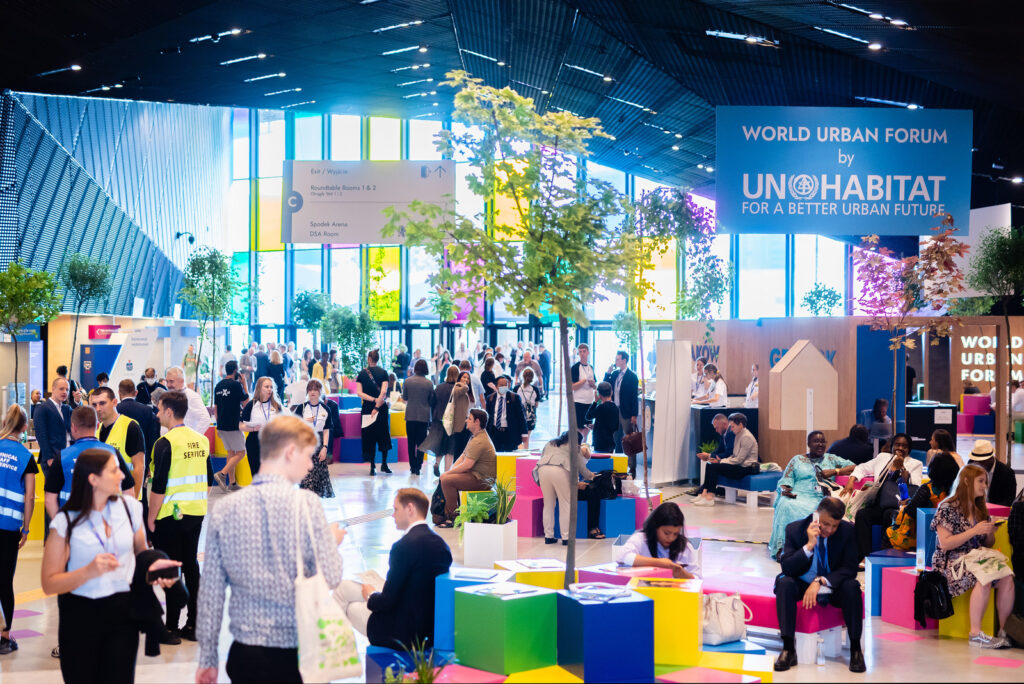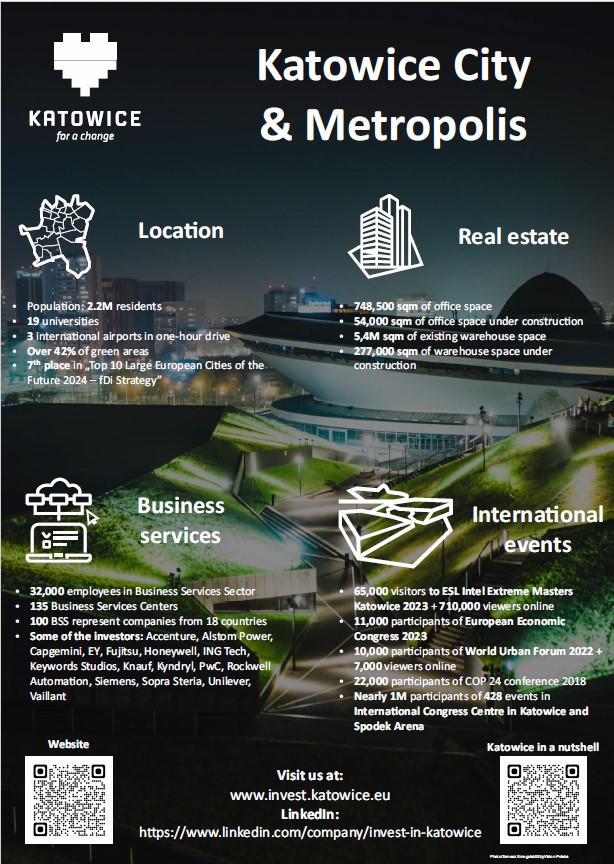World Urban Forum in numbers
The World Urban Forum is the world’s largest event on urban development. It take place every two years. The first session was organized in 2002 in Nairobi. To date, the forum has been hosted in Vancouver, Kuala Lumpur and Abu Dhabi, among others, and has gathered from several to as many as 20,000 participants from around the world. The originator and main organizer of the WUF is UN-Habitat, the United Nations Human Settlements Program. The hosts and co-organizers of the 11th WUF session were the Ministry of Funds and Regional Policy and the city of Katowice. It was the first time the event was held in Central and Eastern Europe. The slogan of the Polish edition of WUF was: “We change our cities for a better future.”

The WUF is a kind of lesson for city managers on how to develop cities to make them more and more resident-friendly and prepared for various situations we have recently experienced, such as pandemics or armed conflicts in various parts of the world, says Katowice Mayor Marcin Krupa. – Everyone who came to Katowice had a chance to see the transformation of the city – one of the largest in this part of Europe. It took place thanks to the residents and was appreciated by visitors from different parts of the world, the mayor emphasizes.
More than 10,000 people from 174 countries attended WUF11 in person and more than 6,000 people joined online. The discussion at WUF11 focused on seven main issues:
- Just cities
- A green future for cities
- Innovation and technology
- Building the resilience of cities
- Urban planning and governance
- The future of urban economics and finance
- Responding to crises and rebuilding cities
Urban EXPO
The attraction that has received the most attention at every World Urban Forum is the Urban EXPO. This is an exhibition space where countries, cities, international and non-governmental organizations and companies present their pavilions. In the case of Katowice, 89 exhibitors from 43 countries from all regions of the world, including the US, Germany, France, Mexico, South Korea, Indonesia, Kenya and Thailand, put up their stands on 8,000 square meters. Half of the exhibitors came from outside Europe.
WUF11 in numbers:
- More than 22,500 people registered for the event.
- This is the first WUF to be held in hybrid form – stationary and online
- The facility where the main events were held was fully powered by renewable energy sources.
- During the WUF, all plants were watered with treated condensate from air conditioners (RES), plants such as trees will be donated to forest nurseries.
- Materials that were prepared for the arrangement of the WUF11 space will be recycled or put to further use. The Logistics Operator will use some of the materials to prepare for future events or they will be converted into reusable bags.
- There was a ban on the use of plastic in any form, so dishes served in the food court were served on biodegradable materials
- Deliveries were made during nighttime hours so as not to impede the movement of city residents.
- The event was helped by 250 volunteers from 24 countries. Average volunteer age: 28 years old, oldest volunteer: 74 years old, youngest: 16 years old.
- Nearly 150 events took place on the city’s 11 WUF stages.
- All the while, the WUF in Your City program is in operation – this is an official patronage granted until the end of 2022 to events close to the ideas of the World Urban Forum. The effect of obtaining it is to give the title of “Official side event of the 11th Session of the World Urban Forum – WUF11”. Only events that relate their theme to at least one of the six “dialogues” of WUF11 can apply for this designation.
- The event used 280 kg of coffee and prepared 18,000 teas.
- Participants preferred vegetables – 2,350 kg of them were eaten. Fruits accounted for 1,600 kg, while sweets, cakes and cookies totaled 1.1 tons.
- The facility was marked with guide lines for the visually impaired.
- The event was supported by more than 40 sign language interpreters.
- The organizers prepared ramps and installed lifts to make each stage accessible to people with disabilities.
- Many venues were equipped with induction loops – these included information desks, the registration area, the auditorium, the Spodek, the Round Table Room and the Polish Pavilion.
- Tactile maps described in braille of the entire conference center were prepared.


